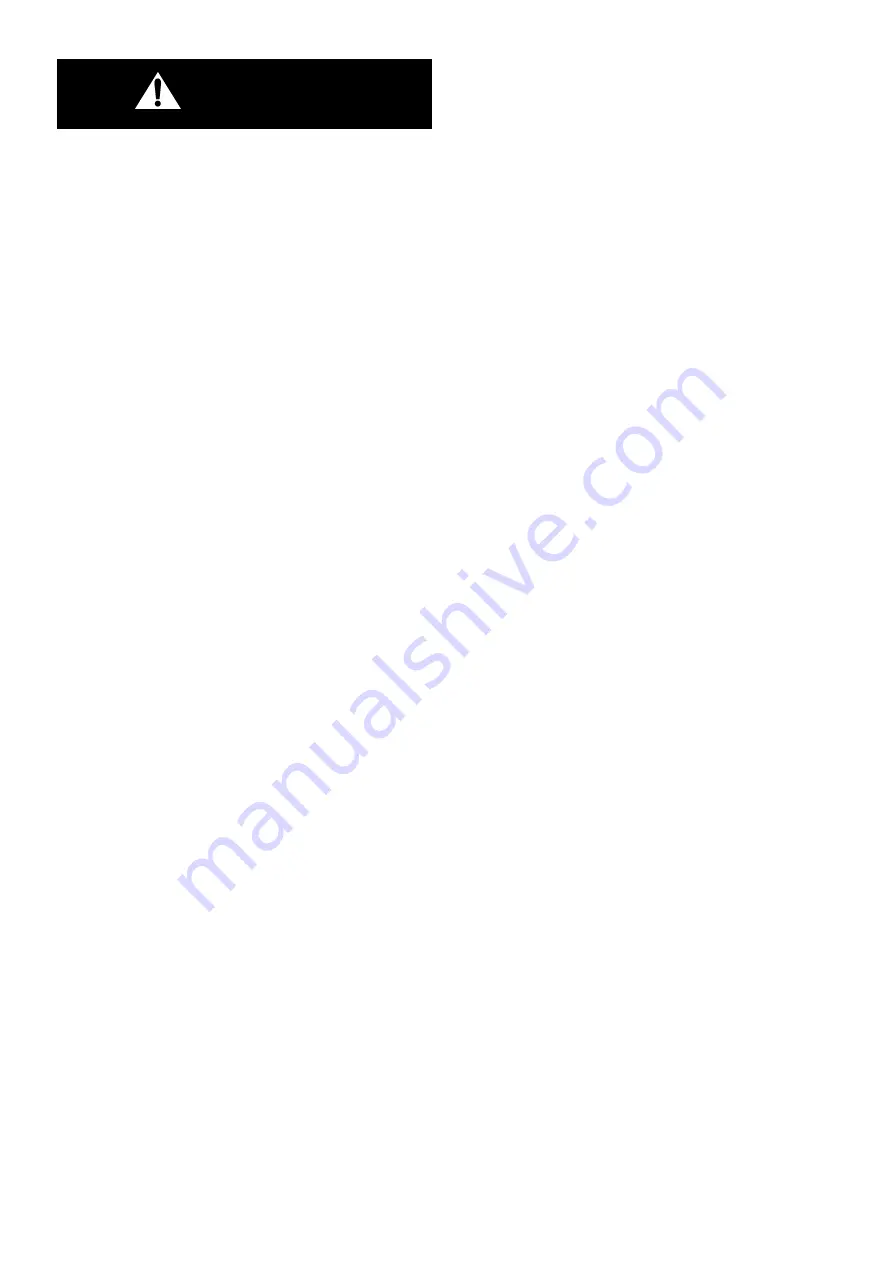
G80XW/XF, G115XW/XF, G150XW/XF, G200XW/XF - 50HZ
OPERATION & MAINTENANCE MANUAL
47
G100XW/XF, G135 XW/XF, G170XW/XF, G225XW/XF - 60Hz
WARNING
Battery fluid is corrosive and dangerous because of
its explosiveness and toxicity. Therefore, it should
only be handled by a skilled technician who special-
izes in battery fluid.
8. Only authorized skilled technicians should repair and
maintain engines.
9. Only appropriate tools should be used. If the jaws of
a wrench are worn out, the wrench might slip during
use, causing accidents or injury.
10. Do not allow other persons to stay or pass under an
engine when lifting the engine with a crane. Before
lifting the engine, ensure that there is no one around
the engine and to ensure enough safe space.
11. Before inspecting or replacing the electrical
apparatus, disconnect the battery ground wire first.
Connect the battery ground wire after completing all
required work for checking or replacing the electrical
apparatus in order to prevent a short circuit.
12. Before performing electric welding work, turn off
engine, block the power supply to the engine, and
remove the wire harness connector.
13. Do NOT give any electric or mechanical shocks or
perform welding works on the electrical apparatus or
the ECU.
GENERAL REPAIR
1. Wait until the engine is properly cooled down before
starting work, as the engine will be hot and may cause
serious burns.
2. Disconnect the battery ground wire from to prevent
damage of wires and sensors caused by a short
circuit.
3. Engine oil and coolant may damage paint and should
be stored in a separate container and marked for safe
management.
4. Store the disassembled parts in a specified space to
avoid damage or pollution.
5. Use specified and special tools for efficient and safe
repair.
6. If parts need to be replaced, use only genuine parts
for
replacement.
Using
unauthorized
or
remanufactured parts may cause critical damage and
faults in engine performance.
7. Replace parts such as cotter pins, gaskets, O-rings,
seal rings, oil seals, and washers with new ones
during repairs. Reuse of parts may be the cause of
engine faults and engine may not operate properly.
8. Group and store disassembled parts in disassembling
order. As bolts and nuts vary in strength, shape and
torque according to their assembly position, divide
and store them accordingly to these characteristics.
9. Clean disassembled parts to remove foreign
substances before inspecting or reassembling parts.
Use compressed air to clean the oil galleries.
10. Thinly spread oil or grease on rotating parts or parts
requiring lubrication, before assembling them.
11. If required, use a specified adhesive to assemble
gaskets to prevent water or oil from leaking.
12. Assemble bolts and nuts with the specified tightening
torque.
13. After completing repairs, conduct a final inspection
and perform a test operation to check if all works have
been successfully completed.
OTHER SAFETY INSTRUCTIONS AND
ENVIRONMENTAL POLLUTION
Observe the following instructions to protect workers
from danger and to prevent the environmental pollution
while performing engine repairs.
1. Good ventilation and low humidity should be
maintained in the work space.
2. The work space should be clean, in good order and
free of flammables.
3. Smoking is strictly forbidden in the workshop.
4. Workers should wear working clothes, protective
goggles, and safety shoes.
5. Workers are not allowed to wear accessories such as
necklaces, rings, watches, and earrings.
6. Start the engine in a well-ventilated space and fully
ventilate the space before starting engine to prevent
carbon monoxide poisoning.
7. Wait until the engine is properly cooled down before
starting work, since you may get burned by the heated
engine.
8. Do NOT work on rotating or running parts once the
engine has been started.
9. Discard oil according to the regulations set forth by
the relevant authorities.
















































